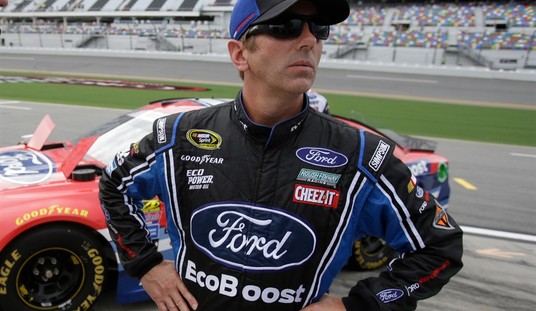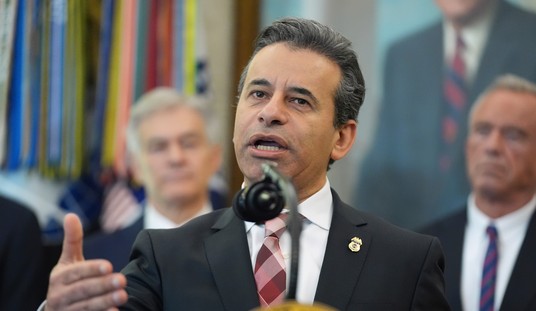Since the Howard Dean 2004 presidential campaign, a debate has emerged among Republicans that takes the form of either “Is the Right behind online?” or “Why is the right behind online?” On the Thursday after Election Day, the chairmen of the Democratic and Republican National Committees discussed a range of issues, including technology, and those discussions told us quite a bit.
Dean, soon to be the ex-DNC chairman, said, “But the Internet is an extraordinary — what the Internet is, is a community. It’s a community of people who don’t happen to live in the same place.”
RNC Chairman Mike Duncan responded: “I want to compliment you on what you did to inspire us and challenge us. Your use of the Internet fund-raising in your presidential campaign, what you did there, the social networking that your team has done.”
This is a fundamentally different perspective of what the Internet is for — forming a social network or raising money. But these views don’t necessarily tell us much about technology.
The Democrat’s vision of community dominated in a quantitative sense. Using TwitVote as a proxy, that community broke 6-1 for Barack Obama, explained in part by Wired magazine’s Technology Scorecard. Clearly, technologists were for Obama and the Democrats.
However, this is not a complete analysis. Compare the technology story with the youth vote, which Obama won. The Republicans once again leveraged their youth activists more successfully. In an interview, the executive director of the Young Democrats of America celebrated their voter contacts as a measure of their activism. The spokeswoman for the College Republican National Committee responded in that interview that in two weekends, the CRNC had exceeded the YDA’s voter contacts in the entire general election. The YDA’s executive director was shocked into silence. Indeed, the CRNC claims credit for phone call volume totaling nearly one-quarter of all voter contact in some states. Did the left win the youth vote? Yes. Did the left win youth activism? Perhaps not.
Just as the left winning the students doesn’t translate into superior student activism, winning the technologists doesn’t translate into superior technology. Between students and technologists, the left has a much more technologically-savvy community and has clearly dominated high-tech activism. Where the right has translated technology into traditional low-tech forms like call sheets and targeted scripts, they have been as, or even more, successful.
Let’s consider some examples from fundraising, GOTV, and communications.
Fundraising
In the Republican primary, Mitt Romney’s campaign argued that they were achieving tremendous success at online fundraising. While strictly true, former RNC eCampaign Director Michael Turk demonstrated that they were using the Internet for fulfillment of offline pledges. They were melding traditional high-dollar fundraising techniques with a new, more efficient mechanism for clearing checks and credit cards.
The Democrats have used online fundraising to lower the barrier to entry for medium and low-dollar donors, which flooded into the system creating the financial juggernauts of the Dean and Obama campaigns. By contrast, Republicans added, say, 5% efficiency onto an old system, as Andrew Rasiej and Micah Sifry have noted. (Note that one constituency on the right, Libertarians and Ron Paul supporters, did engage in significant online activity. But these were significantly — and unfortunately — rejected by the McCain campaign and the Republican Party.)
So Democrats have broken new ground with fundraising technology, while Republicans merely used technology as a tool in their existing efforts.
GOTV
The RNC has been successful at integrating the use of highly-targeted information into their get-out-the-vote operation. They have matched consumer data to the list of voters, allowing them to predict the voting behavior of unregistered or unreliable voters. The Washington Post’s Jose Antonio Vargas noted in a profile of the RNC’s Cyrus Krohn:
For 3 1/2 months, using online micro-targeting and data-matching, he identified a set of voters and turned them out to the polls. Statewide turnout for the Louisiana race was 46 percent. Of those voters who interacted with Krohn’s online targeting — he won’t say how much of the total vote — 76 percent voted, he claims. Krohn says he’s not suggesting that the RNC is responsible for Jindal’s win. What it does suggest, however, is that the model could have significant impact on voter turnout, he adds. “Everyone is talking about Obama and his success with the youth vote. Well, there’s a significant older demographic on the Web, and what I was able to do in Louisiana is identify and interact with an older voting bloc,” Krohn says.
Krohn used technology to identify people who could be persuaded to get out and vote. These lists of people were converted into call sheets, walk sheets, and scripts that volunteers could use to reach these voters. The volunteer didn’t have to understand the modeling. The core of the 72-hour program involved converting high-powered IT programming into something volunteers can use.
Use of micro-targeting and data-matching to find people who should support you, register them, persuade them with targeted messages, and get them to vote with those messages (early if possible)worked quite well. And all the while, field staff, perhaps as ignorant of the technology as the volunteers, only needed to tweak scripts and call sheets.
As ingenious as this was, the problem is that the left could catch up. Dean noted:
Because we had a national voter file, all that information of those millions and millions of voters that came out and voted in the late primaries. We know — we knew who people were who moved from, say, Indiana to North Carolina and needed to be re-registered. And that kind of database — we haven’t had that capability before. So we raised a lot of money but we spent an awful lot of it catching up with these guys, who, frankly, when I got there had a 15- year technological advantage over us. You know, we now can do what they can do. We have your credit card data like they do.
I suspect that the RNC’s GOTV program is still more efficient in both time and money than the DNC’s. However the DNC has more volunteers and money so that the impact of that efficiency is irrelevant. To maintain their previous advantage, the RNC will need to continue to innovate and recruit substantially more volunteers.
Communications
The third way that technology has affected campaigns is the ability to communicate. With Huffington Post, Talking Points Memo, and Think Progress, the left completely reshaped the news cycle. These outlets introduced information that the McCain campaign was forced to respond to, while the blogs on the right rarely forced the Obama campaign to react. The Center for American Progress, the parent of Think Progress, has made clear that their role is to play in the media and public opinion. And they have succeeded. One of the great challenges for the right over the next cycle will be to develop an infrastructure for investigating and propagating politically powerful information that impacts the news cycle.
This is a significant shift over previous years. Since the 1990s, the right has dominated communication with talk radio, Drudge Report, and, later, Fox News, providing a structural advantage by allowing them to talk to their base and also impact the mainstream media cycle.
But 2008 was different in several ways. Talk radio and Fox addressed conservatives, but there didn’t seem to be many persuadable voters who were listening and watching. Several significant Drudge stories failed to get real traction outside of Fox. Meanwhile, Huffington Post and Talking Points Memo were able to regularly push fact-based stories into CNN, MSNBC, the networks, and newspapers. Sometimes, the effect was merely to flood the zone with enough questions that the McCain campaign and RNC was in full defensive mode.
The great conservative media success of 2004, the destruction of Dan Rather, was a story about the media getting something wrong. In 2008, the great liberal media success was not letting the right get a word in edgewise.
There was one significant advance on the right this cycle. Prior to 2008, Election Day operations were meant to document the path to litigation and recounts. In 2008, however, another component emerged: an Election Day media operation.
Election Journal and Vote Fraud Squad documented voting irregularities around the country. Two readers of Election Journal captured live footage of Black Panthers at a Philadelphia precinct that looked like voter intimidation. This video made it onto Drudge, Fox News, and local media. In a close election, these powerful images could have moved public opinion.
Obama’s secret sauce
In the end, the Obama campaign’s various technologies for fundraising, GOTV, and communications were side shows. They all derived from a much more fundamental innovation. Rolling Stone described the most important insight of the Obama campaign from one of their trainers: “We decided that we didn’t want to train volunteers. We want to train organizers — folks who can fend for themselves.” Obama’s website then empowered these organizers. The article continued:
“At the same time, the campaign was developing a new high-tech toolbox to enable its supporters to keep the momentum going — both online and off. With the help of one of the founders of Facebook, the Obama campaign created, MyBo, its own social-networking tool, through which supporters could organize themselves however they saw fit.”
You can make the fundraisers a little more efficient. You can make the GOTV more efficient. You can have a better message and get it out better. These are linear improvements. But political organizations grow exponentially when you improve the organizers. That’s what the Obama campaign did. Everything was focused on making the organizer better.
Ultimately, the GOP will have to learn this message. We will have to learn to empower our activists by incentivizing recruiters. The person who recruits 100 volunteers will have to be as important as the person who raises $100,000. When the GOP organizes itself around these principles and deploys technology to make these people better, then the center-right electorate will translate into winning electoral majorities.









Join the conversation as a VIP Member